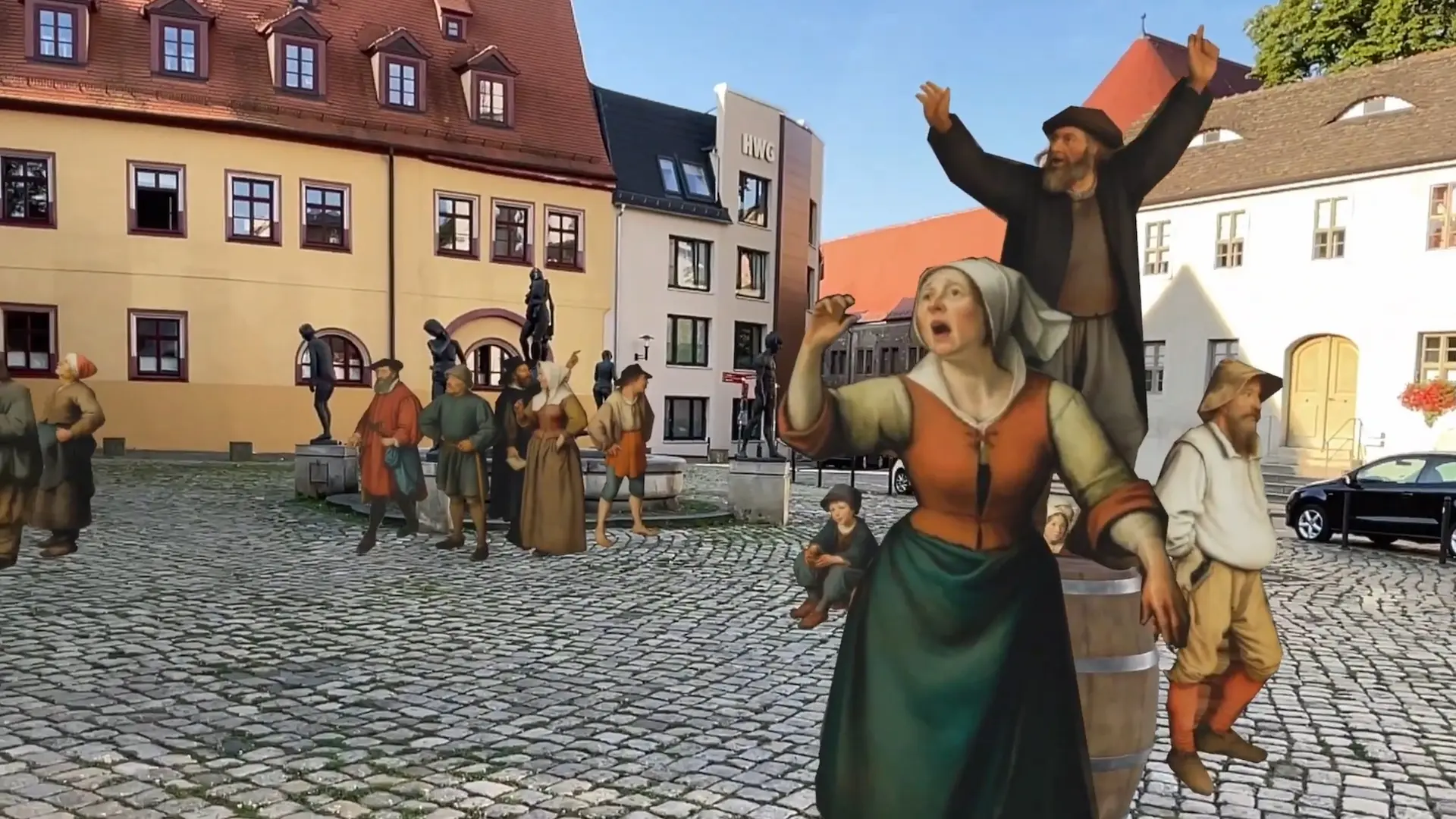For a design agency, the ultimate goal is to create a seamless experience where the technology disappears, leaving only the user and the story. This is the core philosophy of Prefrontal Cortex, a German agency that specializes in crafting interactive, real-time, and immersive applications for a diverse range of clients, from world-class museums and art festivals to innovative health-tech projects.
But delivering these high-end experiences presents a classic challenge: how do you ensure they are accessible to the widest possible audience without the friction of app stores, downloads, and platform-specific builds?
For the team at Prefrontal Cortex, the answer is Needle Engine. We sat down with co-founder Paul Kirsten and his team to learn how Needle empowers them to deliver on their creative vision without compromising on accessibility or workflow.
The Challenge: High-Fidelity Meets Low-Friction
Prefrontal Cortex’s clients often have ambitious goals. They want rich, interactive 3D worlds, but they also need them to be instantly available on any device—a phone, a tablet, a desktop browser, or a VR headset.
“A customer comes to us and says, ’Hey, we want a game, and of course, accessible on every platform’” explains Paul Kirsten, Co-Founder and 3D Artist. “This web approach is really better than downloading an app… if you just walk by, there’s an area with a QR code, and you want to just jump in.”
This requirement for instant access and true cross-platform compatibility immediately points to the web. But traditionally, that meant leaving behind the powerful tools and workflows of game engines like Unity. Prefrontal Cortex needed a solution that offered the best of both worlds.
The Solution: Needle as the Perfect Bridge
“Needle was a bridge which came to us to our mostly used engine, which is Unity.” says Paul. “The workflow for our team stays the same in many parts. You can animate something, and you can press export and it’s in the browser. That workflow is really interesting for us.”

Here’s how Needle Engine has transformed their development process:
1. A Unified, Cross-Platform Workflow For Prefrontal Cortex, the ability to build once and deploy everywhere is a game-changer. “We are able to build WebXR experiences for cross-platform devices.” says Conceptual Interaction Designer Katja Rempel. “So a user can use it on their desktops, on mobile phones, on VR headsets, in mixed reality, on iOS, and on Android.”
2. Rapid, Collaborative Iteration The speed of iteration is crucial for refining an immersive experience. The team described a powerful workflow where one person tests an experience in a VR headset while another makes live adjustments on a computer.
“There was one person sitting on one side having the headset on, doing those exercises in VR, and then there was Franzi on the other side working on the computer and adapting” Paul recalls. “Pressing build and export, and then the update was there in a few seconds… This is something which is crucial for good development for this media.”
3. High-Fidelity Graphics on the Web Needle isn’t just for simple projects. Unity Developer Vincent Kreuziger is pushing the boundaries of web rendering by using Gaussian Splats to display highly complex 3D scans. “We can display very complex objects, including reflections and transparencies, which is usually pretty difficult for scans… we can have fairly complicated objects displayed in a matter of minutes just by adding the relevant components.”
4. Seamless 2D/3D Integration Creating intuitive user interfaces is key to the agency’s work. Katja Rempel explains how they use modern web frameworks to connect the 2D UI with the 3D world. “We use a Svelte framework, and it enables me to send events and functions between 2D and 3D. So for example, if I interact with a simple button, it also changes the cool 3D world that is interactive.”

Bringing History to Life
Prefrontal Cortex has already shipped impressive projects with Needle:
- Francke Zeitzeugen: An interactive historical tour for the Francke Foundations, a World Cultural Heritage site in Halle, Germany. Visitors use AR on their phones and tablets to see historical figures and scenes come to life in the real world.
- DigiVid 19: A VR Breathing Therapy application designed to help patients train their respiratory muscles through a series of calming, gamified exercises.
- Adel & Rebellen: The web app “Adel & Rebellen” accompanies you on your journey through Bad Frankenhausen and opens the door to the town’s captivating history. Get an overview of the town’s most important historical sites and easily find your way using the interactive map.
- A Christmas Snow Globe: A delightful interactive experience where users can decorate their own virtual snow globe in either VR or AR, showcasing Needle’s flexibility for seasonal marketing and events.
- Mobil ans #werk: “Discover the Future of Mobility in Burgwedel” is a collaborative project aimed at reimagining future mobility in Burgwedel. Through an innovative digital 3D model residents can explore new concepts for “Mobility Points” interactively.
For Prefrontal Cortex, Needle provides the technical foundation that allows them to focus on what they do best: designing incredible experiences. By bridging their trusted Unity workflow with the unparalleled reach and accessibility of the web, they can deliver projects that are not only visually stunning and deeply interactive but also effortlessly available to everyone, everywhere.
Ready to see what you can build?